For the impatient: If you don’t care about the analysis of previous winners and all you’re interested in are the candidates for this year’s awards, jump straight to the list…
It’s that time of year again when the whole board game scene takes a deep look into their crystal balls: On Monday, May 18, the jury Spiel des Jahres will announce the nominees for the game of the year award in Germany. There’s a myriad of awards in tabletop gaming, but the red meeple is the one everbody is really after. Even international publishers often prioritise releasing their game in Germany before their home country just so it’d be eligible for Spiel des Jahres. It is that important!
Consequently, there are many lists floating all around the Internet trying to predict this year’s nominees. And this is one of them! Most lists are based on the author’s experience and taste, but here we try to take a data driven approach: We’ll look at the previous winners, try to derive the jury’s (implicit or explicit) criteria, and check what current games that meet those criteria have been rated highly.
You’ll actually get two for the price of one: since 2011, in addition to the traditional main award Spiel des Jahres that is targeted at casual gamers, there is also the Kennerspiel des Jahres for those who are ready for a (little) more complex game, i.e., “connoisseur gamers”. There’s also a third award Kinderspiel des Jahres for children’s games, but since the author of these lines doesn’t know the first thing about this sector (give it another four or five years), we won’t talk further about it.
This is a drama in three acts: First, we’ll take a look at previous winners in order to understand what kind of games the jury likes to honour. Second, we use those criteria to find candidates for this year’s Spiel des Jahres. And lastly, we’ll do the same for the Kennerspiel des Jahres. Let’s go!
Analysis of past winners
It’s worth recalling what the mission statement of Spiel des Jahres is. The target audience are people that buy maybe one game a year which ends up under the Christmas tree and is meant to be played that very evening with the family. This means a game hoping to decorate itself with the red meeple needs to be accessible in every possible way: affordable price point, short rules, quick play time, yet fun for grandchildren and grandparents alike. Luckily for us, BoardGameGeek quantifies about every aspect of games, so let’s look in more details into previous winners and how they scored in those criteria.
Does the community like Spiel des Jahres winners?
First, there’s the question if the community at BoardGameGeek and the jury Spiel des Jahres are aligned at all. After all, the former is full of mostly US-centric hardcore gamers, while the latter is exclusively concerned with casual gamers in Germany. Still, when we look at how the BGG crowd has rated the award winners over the last years, the jury seems to have done a good job:
While not every single game was a hit with the geeks, many Spiel des Jahres winners score highly, and particularly there’s a clear upwards trend visible over the past decade or so. Granted, this is also the case with recent releases in general, but the point remains that German families and American geeks might agree on some games after all.
With that out of the way, let’s examine some of our candidates’ particular features.
How difficult can it be?
BoardGameGeek quantifies a game’s weight or complexity on a scale from 1 (light) to 5 (heavy). Naturally, the accessibility of a Spiel des Jahres pushes them towards the lighter side, though over the years, the jury selected some more complex games as well:
However, recent years have seen a strong trend towards the very light games. In fact, since the introduction of Kennerspiel des Jahres in 2011, only 2012’s winner Kingdom Builder exceeded a complexity rating of 2 (medium light) – by 0.07 points. Even said Kennerspiel, whose first few winners hovered around a weight of 3 (medium), is drawn more and more towards the 2 mark.
From this we can conclude that the Spiel des Jahres 2020 will have a complexity rating below 2, whilst the Kennerspiel des Jahres 2020 will not exceed 3 in its compexity, or let’s say 3.5, in case the jury wants to go experimental.
How long can it take?
In addition to short rules (start quickly), a Spiel des Jahres should also have a short playing time (play quickly). Again, the data confirm this perception:
Here, the bands indicate the span of the playing time indicated on the games’ boxes, while the dashed lines denotes the mean. Playing times are tricky because publishers always lie about them. I suppose they simply don’t want to scare away people whose attention spans become ever shorter (thanks for still being with me by the way) with the prospect of sitting through an hour of some ultra nerdy activity. But since everybody lies the same way, we can at least compare games with each other. And again, it becomes obvious how import immediate accessibility is to the jury: The last winner that admitted to having a playing time of more than 45 minutes was 2006’s Thurn and Taxis, and none has exceeded the hour mark since 1999’s Tikal.
On the other hand, the jury seems to have no problem with longer playing times for a Kennerspiel. The sweet spot still seems to be around 60 minutes, but even 90 or 120 minutes on the box do not exclude a game from the connoisseurs’ award.
In conclusion, the Spiel des Jahres 2020 will be playable in under 1 hour, probably even 45 minutes, whilst the Kennerspiel des Jahres 2020 might take up to 2 hours.
How many players can take part?
The Spiel’s character as a family or rather group activity becomes obvious when looking at the supported player counts:
Every single winner of either award was playable with 3 and 4 players. It’s just what a typical German family looks like, so there’s no way the jury will deviate from this pattern. In fact, there’s only two games that were even nominated with a different player count, both pure 2-player-games: Targi in 2012 and Jambo in 2005.
Therefore, without a doubt, both Spiel des Jahres 2020 and Kennerspiel des Jahres 2020 will have to be playable with 3 and 4 players. (Of course, it’s a bonus if a game also works with lower or higher player counts, but 3 and 4 are a must.)
How old do they have to be?
As I mentioned above, a Spiel des Jahres should bring together children with their grandparents, yet, somewhat surprisingly, publishers don’t always seem to trust their games with the younger audience:
Here the solid line is what’s printed on the box, whilst the dotted line is what the community thinks. Similar to playing time, age recommendations are tricky and publishers often have a different opinion on it than players, but usually in the other direction. (It’s worth noticing though that often there aren’t all that many players that “vote” on the age recommendations, so take them with a pinch of salt.)
What stands out in this graphic is that Spiel des Jahres winners often have a recommended age of 12+. Notably, 2016’s winner Codenames has 14+ printed on the box, while the community thinks it’s fine to play with children from 10 years of age. Unsurprisingly, the more complex Kennerspiel often has a slightly higher age recommendation, although all winners so far stay below the mark of 12 years.
All of this makes it hard to draw a conclusion. Spiel des Jahres winners can typically be played with 8 to 10 year old children, while a Kennerspiel can usually be found in the age range from 10 to 12 years. But because of the somewhat erratic age recommendations, we only stipulate a limit of 14 years for both Spiel des Jahres 2020 and Kennerspiel des Jahres 2020. Still, one can confidently exclude any game that includes adult topics or themes that might put off the younger or older audience.
Summary of criteria
OK, now we’ve got an understanding of what a game needs to look like if it hopes to win the coveted awards. A Spiel des Jahres needs to
- have a complexity rating of 2 (medium light) or less and
- be playable in under 60 minutes (better 45 minutes)
- by (at least) 3 to 4 players
- with a minimum age of at most 14 years old (better yet 12 or even 10 years old).
A Kennerspiel des Jahres needs to
- have a complexity rating of 3.5 (medium), better 2.5 or less and
- be playable in under 120 minutes (better 90 minutes)
- by (at least) 3 to 4 players
- with a minimum age of at most 14 years old (better yet 12).
Further, we need to talk about a game’s release date. It’s actually not that easy to exactly pinpoint which games are eligible for the award as the jury would generally consider games that were released between April 2019 and March 20201 into wider German distribution. BoardGameGeek keeps record of the year of first release, which could be a limited first print run in a different market. A game that was released years ago in its homecountry might be nominated for Spiel des Jahres years later when it hits the German market. This happened with Werewords which was first released in 2017, but saw a German edition only in early 2019 and was nominated that year. So by simply filtering on the year in the BGG database we might miss some releases, but c’est la vie…
Without further ado, let’s find some games that meet all those criteria!
Candidates for Spiel des Jahres

Gamers’ choices
First, we’ll look at games released in 2019 and 2020, sorted by their rating on BoardGameGeek. When you click on that link, the list you’ll see might be very different from what I worked with if some time has passed, so don’t be confused if the names you read here are very different. Also, I’ll skip any games that are ineligible for one reason or another.
Note that you get essentially the same list when looking at the Recommend.Games ratings.
Cartographers: A Roll Player Tale
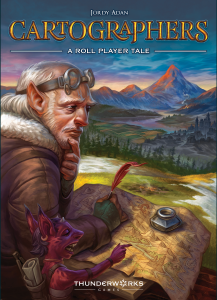
A roll and write game that can be found on pretty much every list, hence a strong candidate for a nomination. However, its complexity is similar to That’s Pretty Clever, so this one might end up on the Kennerspiel list instead.
Wavelength
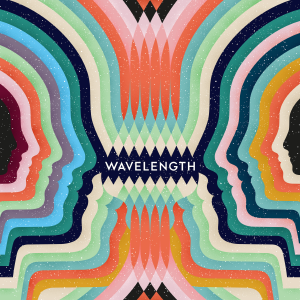
As a simple and immediate party game, this one is right up the jury’s alley when we look at the past years. Some say that a game targeted at large gatherings might be a tough sell while COVID–19 continues to rage, but on the other hand, Wavelength has proven itself something of a darling for playing via video chat, so I wouldn’t discard it. Interestingly, this is another game where the publisher and the players can’t agree on the age: the former recommends the game to player of 14 years and up, while the latter believe it’s fine for 8-year-olds!
Silver & Gold

I don’t have much information on this one, but theme, weight, and play time all seem very compatible with a Spiel des Jahres.
Draftosaurus
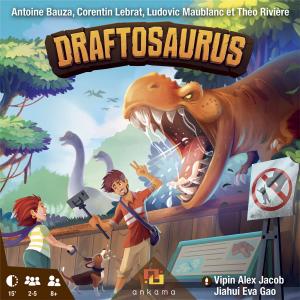
As with Silver & Gold, this game seems almost designed with Spiel des Jahres in mind. Antoine Bauza certainly has quite a collection of big wooden meeples already!
Obscurio
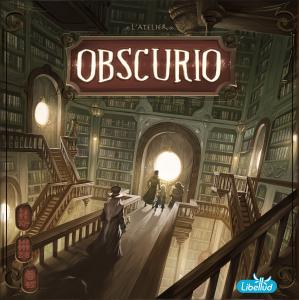
This looks very much like Mysterium with a traitor. Both this twist and it’s fairly high complexity make it somewhat of a dark horse in the running.
Recommended to the jury
Instead of looking at the community at large, we really want to know what games specifically fit the jury’s taste. The best way to achieve this is to feed previous winners, special awards, nominees, and recommendations into Recommend.Games’s engine and see what falls out of this black box! Note that in the list below I skip those games that we already covered above.
Pictures

This game sounds almost like a sandbox full of toys that could engage the whole family. Definitely Spiel des Jahres material!
Miyabi

I got very little on this one, but Michael Kiesling sure knows how to design a Spiel des Jahres, so why not?
Deep Blue
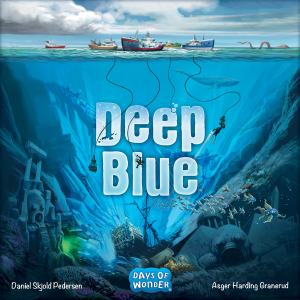
Publisher Days of Wonders can pride themselves with one of the most iconic winners: Ticket to Ride. This game could mark their return to the nomination list.
One Key
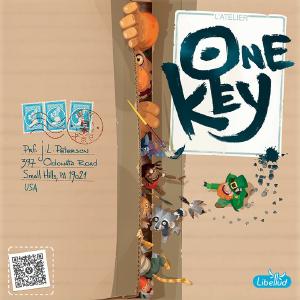
From the same team as Obscurio, this one might be a little lighter, a little faster, a little more different, i.e., a stronger contender.
Similo

Another quick and easy game, in this case also very afforable and portable. Overall this could make it a very welcoming introduction into the wonderful world of board games.
My two cents
I tried to be as objective as possible with the selection above and let the data do the talking. But let me conclude this list with the three games that I personally think have the highest chance of receiving a nomination for Spiel des Jahres 2020:
So, those were the ten (plus three) games that, according to the data, should be the most likely to receive a nomination for Spiel des Jahres. Will the jury be this predictable? We will find out soon! For now, let’s move on to the connoisseurs’ games.
Candidates for Kennerspiel des Jahres

Gamers’ choices
As for the main award, we find the community’s favourites by looking at the BoardGameGeek and Recommend.Games ratings, which yield similar results.
Res Arcana

While fantasy isn’t necessarily the jury’s favourite theme, it didn’t stop them from giving the award to Legends of Andor in 2013. Reviewers hold Res Arcana in high regard, so this is one to watch.
The Crew: The Quest for Planet Nine

This cooperative trick-taking game is pretty much on every list, but usually for Spiel des Jahres. However, its complexity clocks in at at 2.2, well beyond what the jury would generally consider for the main award. I believe most experienced gamers underestimate how difficult the concept of trick-taking is to new players, so this game has much higher chances to win Kennerspiel des Jahres.
Tiny Towns

Another game that appears to be on everybody’s mind. Play time and complexity certainly qualify it for Kennerspiel. Bonus: the characters on the cover practice exemplary social distancing! 2
Hadara
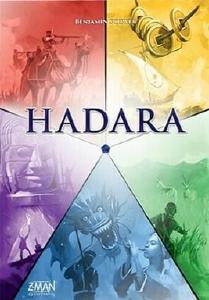
Game studio Hans im Glück sure won their share of Spiel des Jahres awards. Could this be their first Kennerspiel?
Villagers

I don’t have much to say about this game either, but the fact that Kosmos recently released a German edition won’t harm its chances for Kennerspiel.
Recommended to the jury
Now let’s look at games recommended to the jury based on their previous choices, again skipping those that were already mentioned above.
Letter Jam
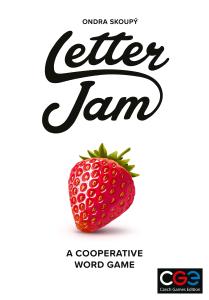
This is a tricky one. While it’s been lauded as an innovative word game, its many rules and details push its complexity into the realm of Kennerspiel des Jahres, while the word / party game genre clearly belongs with Spiel des Jahres (where it’s arguably over-represented).
Fast Sloths

The jury clearly is a fan of designer Friedemann Friese’s work as evident but many recommendations, but didn’t find a game worthy of the big meeple yet. Could this pick me up and deliver me game change their mind?
Nova Luna
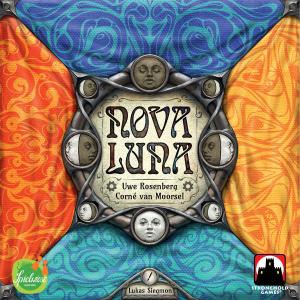
Uwe Rosenberg is another favourite designer for both the community and the jury. Agricola kinda won Kennerspiel before it even existed (special award “Complex Game” in 2008), but he’s been waiting for a main award ever since. Nova Luna could be his shot, though abstract games tend to have a hard time with the jury.
Kitchen Rush
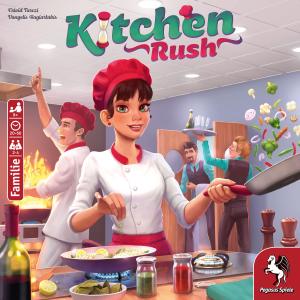
A real time cooperative worker placement game sounds like a winning combination right from the start, so this is another one to watch. However, theme and premise seem to fit better with Spiel des Jahres, but for that it’s just too complex.
Adventure Games: The Dungeon / Monochrome Inc.
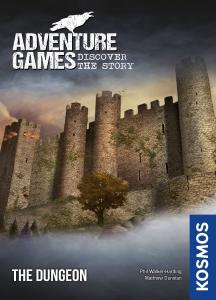
Everything about this pair reminds us of the Exit Game Series that won Kennerspiel des Jahres in 2017. Hard to tell if that’s to the games’ advantage or disadvantage…
My two cents
Again, let’s wrap this up with my personal daring prediction of the three nominees for Kennerspiel des Jahres 2020:
To be honest, I think Cartographers also seems to be a very strong contender, I just cannot decide for which list!
This concludes our list of ten candidates for both awards. I’m truly excited to see what we got right and where the jury will surprise us. What games do you think we missed? Is there a very recently released game that might fly under everyone’s radar? Let us know and discuss in the comments below!
Read Part 2 for the actual nominations and how I did with my predictions. Read Part 3 for analyses of the nominees and my predictions for the winners. Read Part 4 for the winners and conclusion.
PS: You can find the notebook I used for the graphs and most of the analysis I did above on Kaggle.
Honourable mentions
I’ll leave you with few games that didn’t make it to the lists above for one reason or another, but are still worth keeping an eye on. Some might show up in the recommendations, some in next year’s edition. Stay tuned!
Latecomers
Games that were release just before the deadline last year. They might get a second chance (see what I did there?) this year if the year is short on other candidates due to COVID–19.
Late to Germany
Like I said, it’s hard to include in our analysis games that were released earlier, but just arrived to Germany. One sticks out though:
Just outside the criteria
Here I mention some games that didn’t make the cut because they are outside one or more of the jury’s (hypothetical) criteria. These might still end up on the recommendation lists.
Too “special”
- Cthulhu: Death May Die: very expensive, plus the horror theme doesn’t strike well with the jury
- King’s Dilemma: 16+ according to the community, just a little too mature
- TEAM3 GREEN and PINK: not quite a general interest game, but already received a favourable mention on the jury’s website
Too complex
Two player only
Comebacks
While the jury has awarded games before that were reimplementations of previously published games (e.g., Alhambra in 2003), it still feels less likely, particularly when the new version is very close to the previous release, or it has been on the recommendation list already. But then again, the jury does like a surprise…
- Azul: Summer Pavilion (reimplements Azul)
- Corinth (reimplements Yspahan)
- Imperial Settlers: Empires of the North (reimplements Imperial Settlers)
- Noch mal so gut! (reimplements Encore!)
Too late
There’s many games that already stirred quite some interest internationally and can be found on many prediction lists, but that haven’t had a German release in time, so won’t be eligible this year. It’s worth keeping an eye on them for next year though!
- Horrified
- It’s a Wonderful World
- The Lord of the Rings: Journeys in Middle-earth
- Marvel Champions: The Card Game
- Medium
- Noctiluca
- On Tour
- PARKS
- Point Salad
- Q.E.
- Quirky Circuits
- Roam
- Sushi Roll
- Tainted Grail: The Fall of Avalon
- Tapestry
- Terror Below
- Trails of Tucana
- The Isle of Cats
- Tussie Mussie
- Village Pillage
-
The jury has stated that the COVID–19 pandemic does not alter the schedule for this year’s awards. However, they may not be able to thoroughly test some games that were released close to the March deadline, so those might be considered for Spiel des Jahres 2021 instead. ↩︎
-
This joke was stolen from Udo Bartsch. It was too good to be omitted! ↩︎